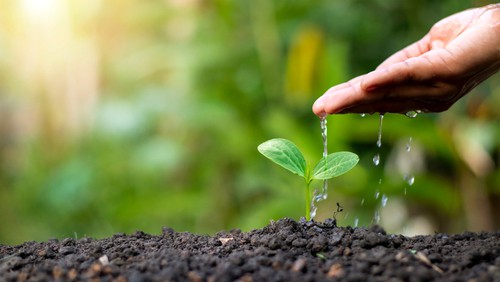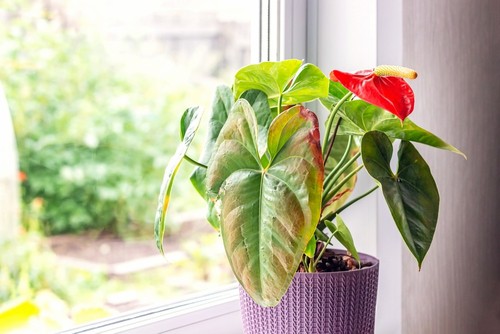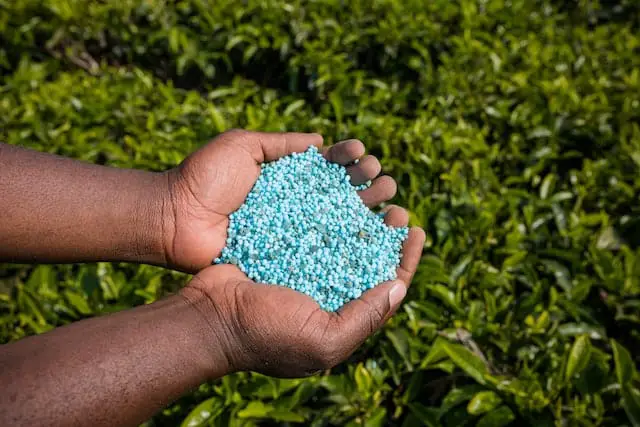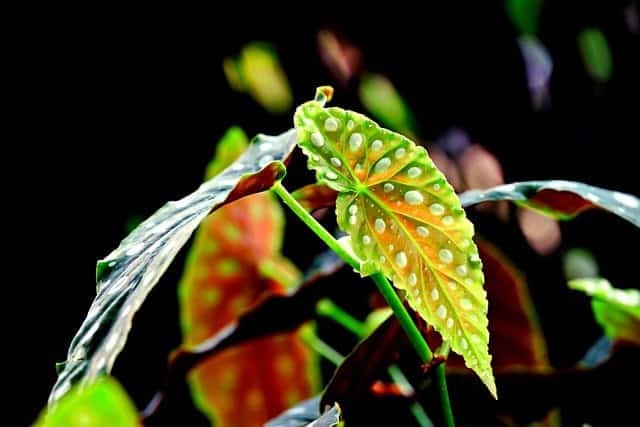Begonias are a popular houseplant that can add a touch of color and vibrancy to any home. However, if you notice brown edges on the leaves, it can be concerning. Brown edges are a common problem for begonia plants, but they are not always a sign of a serious issue.
In this article, we will discuss the common causes of brown leaf edges on begonias and what you can do to prevent this problem.
Understanding begonias is essential to keeping them healthy and thriving. Begonias are known for their beautiful foliage and flowers, but they can be sensitive to changes in their environment.
They require specific conditions to grow well, including the right amount of water, light, and nutrients. If any of these conditions are not met, begonias can develop brown edges on their leaves.
There are several common causes of brown leaf edges on begonias, including watering issues, light and temperature factors, soil and drainage problems, disease and pest issues, and nutrient deficiency and over-fertilization.
By understanding these causes, you can take steps to prevent brown edges on your begonia leaves and keep your plant healthy and vibrant.
Key Takeaways
- Brown edges on begonia leaves are a common problem, but not always a sign of a serious issue.
- Understanding begonias’ specific needs, including water, light, and nutrients, is crucial to preventing brown edges on their leaves.
- Common causes of brown leaf edges on begonias include watering issues, light and temperature factors, soil and drainage problems, disease and pest issues, and nutrient deficiency and over-fertilization.
Also see:
Understanding Begonias

Begonias are a popular indoor plant known for their stunning and vibrant foliage. These tropical plants come in a wide variety of colors, shapes, and sizes, making them a favorite among many plant enthusiasts.
Begonias are generally easy to care for and can thrive in a variety of indoor conditions. They are known for their ability to adapt to different lighting and humidity levels, making them a great choice for beginners.
There are several types of begonias, including rhizomatous begonias, tuberous begonias, and the popular polka dot begonia. Each variety has its unique characteristics and care requirements.
Rhizomatous begonias are known for their thick, fleshy stems that grow horizontally along the soil surface. They are prized for their colorful foliage and are relatively easy to care for. Tuberous begonias, on the other hand, are known for their showy flowers and are often grown for their blooms rather than their foliage.
The polka dot begonia is a popular variety known for its distinctive silver spots on its dark green leaves. This plant is relatively easy to care for and can be grown in a variety of indoor conditions.
Despite their adaptability, begonias can be prone to certain issues, including brown leaves on the edges. This can be caused by a variety of factors, including watering problems, low humidity, excess direct sunlight, or disease. Understanding the specific care requirements for your begonia variety can help you identify and address any issues that may arise.
Begonia Leaves Turning Brown on Edges – 6 Common Problems
Brown leaf edges are a common problem with begonias. There are several reasons why this may occur, including:
1. Underwatering
When you don’t feed your Begonia with sufficient water, the leaves will start to turn brown around the edges. This is because the plant is not getting enough water to support its growth. To avoid this problem, make sure to water your begonia regularly, but do not overwater it.
2. Overwatering
Overwatering can also cause brown leaf edges in begonias. When a plant is overwatered, the roots become waterlogged and cannot absorb nutrients properly. This can lead to brown leaves and other problems. To avoid overwatering, make sure to let the soil dry out slightly between waterings.
3. Low Humidity

Begonias prefer a humid environment, and low humidity can cause the leaves to dry out and turn brown around the edges. To increase humidity, you can place a tray of water near the plant or use a humidifier.
4. Direct Sunlight
Begonias do not like direct sunlight, and exposure to too much sun can cause the leaves to turn brown. To avoid this problem, place your begonia in a location where it will receive indirect sunlight or use a shade cloth to filter the light.
5. Fertilizer Burn
Over-fertilizing can cause brown leaf edges in begonias. If you notice brown edges on your begonia’s leaves after fertilizing, reduce the amount of fertilizer you are using.
6. Pest Infestation
Some pests, such as spider mites and thrips, can cause brown leaf edges in begonias. If you notice signs of pest infestation, such as webbing or tiny insects on the leaves, treat your plant with an appropriate insecticide.
Watering Issues
Begonias are sensitive to watering, and brown edges on the leaves can be a sign of watering issues. In this section, we will discuss the three most common watering issues that can cause brown edges on Begonia leaves: Overwatering, Underwatering, and Water Quality.
Overwatering
Overwatering is a common cause of brown edges on Begonia leaves. When the soil is constantly moist or soggy, it can lead to root rot and other fungal diseases, which can cause the leaves to turn brown. To avoid overwatering, it is important to water your Begonia only when the top inch of soil is dry to the touch.
Additionally, bottom watering can help prevent overwatering by allowing the plant to absorb water from the roots up, rather than from the top down. This can help prevent water from sitting on the surface of the soil, which can lead to soggy soil and root rot.
Underwatering
Underwatering can also cause brown edges on Begonia leaves. When the soil is too dry, the plant can become dehydrated and stressed, which can cause the edges of the leaves to turn brown. To avoid underwatering, it is important to water your Begonia when the top inch of soil is dry to the touch.
It is also important to water your Begonia thoroughly, so that the water reaches all the roots. If you notice that the soil is pulling away from the sides of the pot, it may be an indication that the plant is not getting enough water.
Water Quality

Water quality can also play a role in the health of your Begonia. If your tap water is high in minerals or chemicals, it can cause brown edges on the leaves. To avoid this, it is recommended to use distilled or filtered water when watering your Begonia.
In addition to using the right water, it is also important to use the right soil mix. Begonias prefer well-draining soil that is rich in organic matter. A soil mix that is too heavy can lead to overwatering and root rot, while a soil mix that is too light can lead to underwatering and dehydration
Light and Temperature Factors
Begonias are sensitive to light and temperature, and improper conditions can cause brown edges on their leaves. Here are some factors to consider:
Sunburn
Begonias prefer bright but indirect light. Exposing them to direct sunlight can cause sunburn, which can manifest as brown or yellow patches on the leaves. If the plant is receiving too much sun, it is recommended to move it to a shadier spot or use a sheer curtain to filter the light.
Low Light
On the other hand, insufficient light can also cause brown edges on begonia leaves. If the plant is not receiving enough light, it may start shedding leaves or developing brown edges. If the plant is indoors, consider moving it to a brighter spot or supplementing it with artificial light.
Temperature Stress
Begonias prefer temperatures between 60-75°F (15-24°C) and can suffer from temperature stress if exposed to extreme temperatures. High temperatures can cause the plant to wilt, while low temperatures can cause leaf discoloration. If the plant is exposed to temperature stress, it is recommended to move it to a more suitable location.
Proper humidity is also important for begonias. Low humidity can cause brown edges on the leaves, while high humidity can cause fungal diseases. Using a humidifier or misting the plant can help maintain proper humidity levels.
Soil and Drainage

Begonias prefer well-draining soil that is rich in organic matter. Soil that retains too much moisture can lead to root rot and brown leaves. Proper drainage is essential to keep the soil from becoming waterlogged.
Poor Drainage
If the soil is not draining properly, it can lead to waterlogged soil and cause the roots to rot. This can cause the leaves to turn brown, and the plant may eventually die. To prevent poor drainage, ensure that the container has adequate drainage holes. If the container does not have drainage holes, the soil will not be able to drain properly, and the plant will suffer.
Inappropriate Soil
Using inappropriate soil can also cause brown leaves on begonias. Begonias require well-draining soil that is rich in organic matter.
Heavy soils, such as clay, retain too much moisture and can lead to root rot. On the other hand, sandy soils do not retain enough moisture and can cause the plant to dry out. A good soil mix for begonias should contain peat moss, perlite, and vermiculite.
When repotting begonias, it is essential to use a well-draining soil mix. The soil should be moist but not wet. When watering, ensure that the water flows out of the drainage holes. If the soil is too dry, the leaves may turn brown, and the plant may wilt.
Disease and Pest Problems
Begonias are susceptible to various diseases and pests that can cause the leaves to turn brown on the edges. Identifying the problem is crucial to finding the right solution. Here are some common diseases and pests that can affect begonias:
Fungal Diseases
Powdery mildew is a common fungal disease that can cause a white, powdery coating on the leaves. It is often caused by high humidity and poor air circulation. Other fungal diseases that can affect begonias include botrytis blight, anthracnose, and pythium stem rot. These diseases can cause brown spots on the leaves, wilting, and leaf drop.
Bacterial Diseases

Bacterial leaf spot and rhizoctonia crown rot are two bacterial diseases that can affect begonias. Bacterial leaf spot can cause brown spots on the leaves, while rhizoctonia crown rot can cause the plant to wilt and die. These diseases are often caused by overwatering or poor drainage.
Pest Infestation
Thrips and foliar nematodes are two pests that can infest begonias. Thrips are tiny insects that can cause brown spots on the leaves, while foliar nematodes can cause the leaves to wilt and die. Slugs and snails can also damage begonias by eating holes in the leaves.
Prevention is the best way to avoid disease and pest problems. Proper watering, good air circulation, and regular cleaning of the leaves can help prevent fungal diseases. Avoid overwatering and provide good drainage to prevent bacterial diseases. Insecticidal soap and neem oil can be used to control pests.
Nutrient Deficiency and Over-Fertilization
Nutrient Deficiency
Begonia leaves turning brown on edges can also be caused by nutrient deficiency. Begonias require a balanced amount of nutrients to grow and thrive. If they don’t receive the right amount of nutrients, they can develop brown edges and tips.
The most common nutrient deficiencies that cause brown edges and tips on begonia leaves are nitrogen, potassium, and magnesium. Nitrogen deficiency can cause the leaves to turn yellow or pale, while potassium deficiency can cause the leaves to curl and brown around the edges. Magnesium deficiency can cause brown spots and edges on the leaves.
To prevent nutrient deficiencies, it is important to fertilize your begonias regularly with a balanced fertilizer. A balanced fertilizer contains equal amounts of nitrogen, phosphorus, and potassium, as well as other essential micronutrients.
Fertilizer Burn

Over-fertilization can also cause brown edges and tips on begonia leaves. When you apply too much fertilizer, the roots of the plant can become damaged and unable to absorb water and nutrients. This can lead to brown edges and tips on the leaves, as well as other signs of stress such as wilting and yellowing.
To prevent fertilizer burn, it is important to follow the instructions on the fertilizer package and not exceed the recommended dosage. It is also important to water your begonias regularly to help flush out excess salts and nutrients from the soil.
Preventing Brown Leaves on Begonias
Begonias are a popular houseplant known for their stunning foliage and bright blooms. However, it can be alarming when the vibrant green leaves take on a brown hue, especially around the edges. Fortunately, there are several things gardeners can do to prevent brown leaves on begonias.
Proper Care Instructions
Proper care, including watering, light, humidity, and nutrients, is crucial for preventing brown leaves and maintaining plant health. Here are some reminders for taking care of begonias:
- Water: Begonias constantly need the right amount of moisture. The soil shouldn’t be soggy or overwatered, but it shouldn’t be dry either. Make sure to water your begonia when the top inch of soil is dry to the touch.
- Light: Begonias thrive in bright, indirect light. Avoid placing your begonia in direct sunlight, as it can scorch the leaves.
- Humidity: Begonias are tropical plants that require high humidity to thrive. Consider using a humidifier or placing a pebble tray filled with water near your plant to increase humidity levels.
- Nutrients: Begonias benefit from regular fertilization during the growing season. Use a balanced fertilizer every two to four weeks to keep your plant healthy.
Choosing the Right Variety
Choosing the right variety of begonia can also help prevent brown leaves. Some begonias are more prone to brown leaves than others, so consider selecting a variety that is better suited to your environment. For example, some begonias are more tolerant of low humidity levels, while others thrive in bright, indirect light.
In tropical regions, it’s important to select a variety of begonia that can tolerate the heat and humidity. Some good options include the Angel Wing Begonia, the Wax Begonia, and the Rex Begonia.
By following proper care instructions and choosing the right variety, gardeners can prevent brown leaves on begonias and enjoy the beauty of these stunning plants.
Frequently Asked Questions

How can I prevent brown spots on my begonia leaves?
To prevent brown spots on begonia leaves, ensure that the plant is not exposed to direct sunlight for extended periods. Begonias prefer bright, indirect light, and too much direct sunlight can cause brown spots. Additionally, begonias require consistent watering to prevent brown spots. Water the plant when the soil is dry to the touch, but avoid overwatering.
What causes begonia leaves to turn brown on the edges?
Begonia leaves can turn brown on the edges due to a variety of reasons. One common cause is underwatering, which can cause the leaves to dry out and become brittle. Overwatering can also cause brown edges, as it can lead to root rot and other fungal diseases. Exposure to direct sunlight can cause the leaves to scorch and turn brown.
What is the best way to water begonias to prevent brown edges on leaves?
To prevent brown edges on begonia leaves, water the plant when the soil is dry to the touch. Avoid overwatering, as this can cause root rot and other fungal diseases. Water the plant thoroughly until water flows out of the drainage holes, but discard any excess water in the tray after a few minutes.
How do I know if my begonias are overwatered?
Overwatered begonias may exhibit yellowing leaves, wilting, and a mushy texture. The soil may also have a foul smell, and the roots may appear brown or black and mushy. If you suspect that your begonias are overwatered, reduce watering and allow the soil to dry out before watering again.
What is the best way to treat begonia leaf rot?
To treat begonia leaf rot, remove any affected leaves and dispose of them. Water the plant less frequently and ensure that it is not overwatered. You can also apply a fungicide to the plant to prevent further spread of the disease.
Can I save my begonia plant if the leaves are turning brown?
Yes, you can save your begonia plant if the leaves are turning brown. Identify the cause of the brown leaves and take appropriate action, such as adjusting watering habits or moving the plant to a location with better lighting conditions. Remove any dead or dying leaves and treat the plant with a fungicide if necessary. With proper care, your begonia plant should recover and produce healthy leaves.

Hey, I’m Lisa and I’ve been an avid gardener for over 30 years. I love writing, talking and living in the garden! Feel free to connect with me on my socials below

